Sea Dragon – Unbelievable Floating Specters
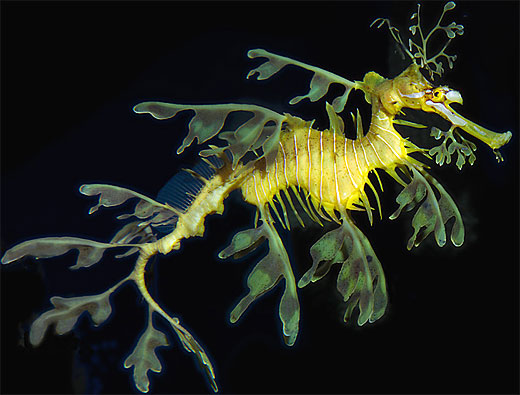
The sea dragon is related to the seahorse and is one of the very few animals where the male carries the eggs for incubation. There are two kinds: the leafy sea dragon, and the weedy sea dragon. Both species resemble mythical dragons, due to their body shape.
The Weedy One
The weedy sea dragon lives along the southern coast of Australia and around Tasmania. They can grow as long as 45 cm (17.5 inches). They have projections that resemble seaweed, which acts as camouflage. This helps them hide in seaweed beds, between the depths of 3 meters and 50 meters (10 feet and 164 feet).
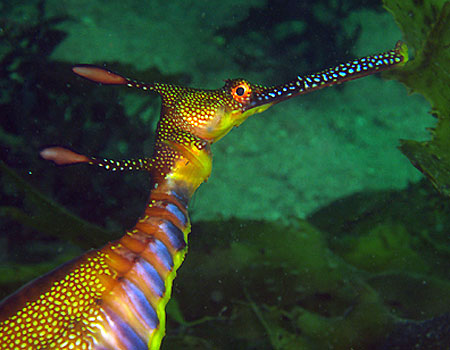
They feed off small crustaceans and other zooplankton. Their tails are what makes them so different to seahorses. The sea dragon can not use its tail to grab onto things, or to anchor itself into a fixed position. They use their long snouts to reach into small cracks and crevices in rocks, to feed.
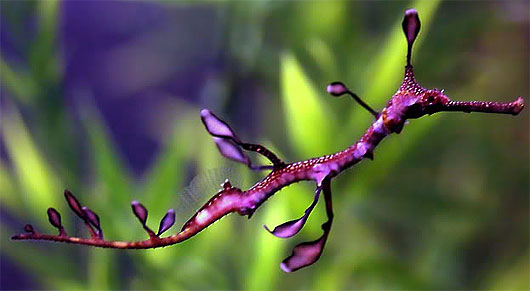
The male carries the fertilized eggs under its tail, for approximately eight weeks, after which they hatch. The young begin eating soon afterward, and are mostly self-sufficient.
It is not known what triggers the reproductive process, so it is difficult to breed the creatures in captivity, making the conservation of their natural habitat very important.
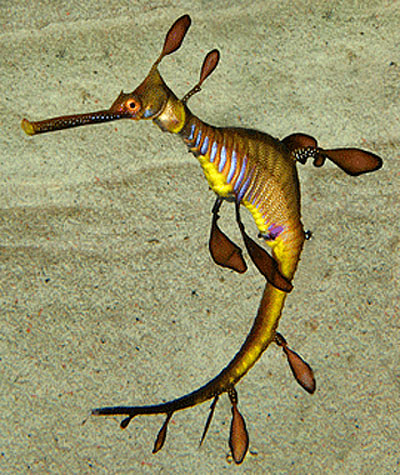
The Leafy One
The leafy sea dragon has proportionally long leaf-like protrusions from its body, which serve as camouflage and do not help it move. They have spines around their bodies, as protection against attackers. They have no predators and live for between 5 and 10 years.
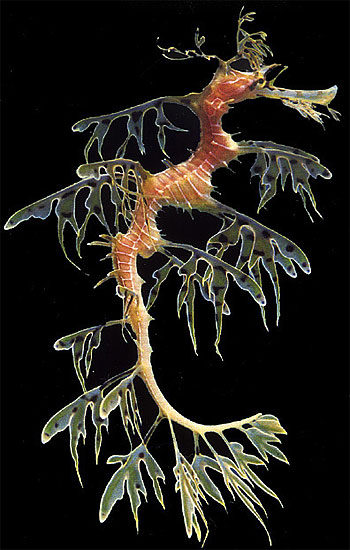
The male carries between 100 and 250 the fertilized eggs for four to six weeks, and each egg has its own pouch under the tail.
They eat crustaceans and plankton, as well as small fish – even though it has no teeth.
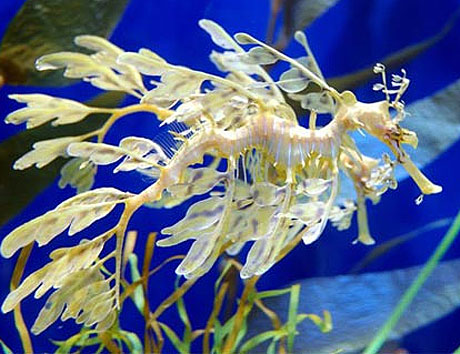
They move around via a dorsal and pectoral fin. The leaf-like protrusions are much larger than those of the weedy sea dragon, and can change color, depending on the diet and stress levels of the individual creature.
The leafy sea dragon is South Australia’s official marine emblem, and it is even the subject of a biennial festival, the “Leafy Sea Dragon Festival”, which is run by the District Council of Yankalilla, in South Australia.
